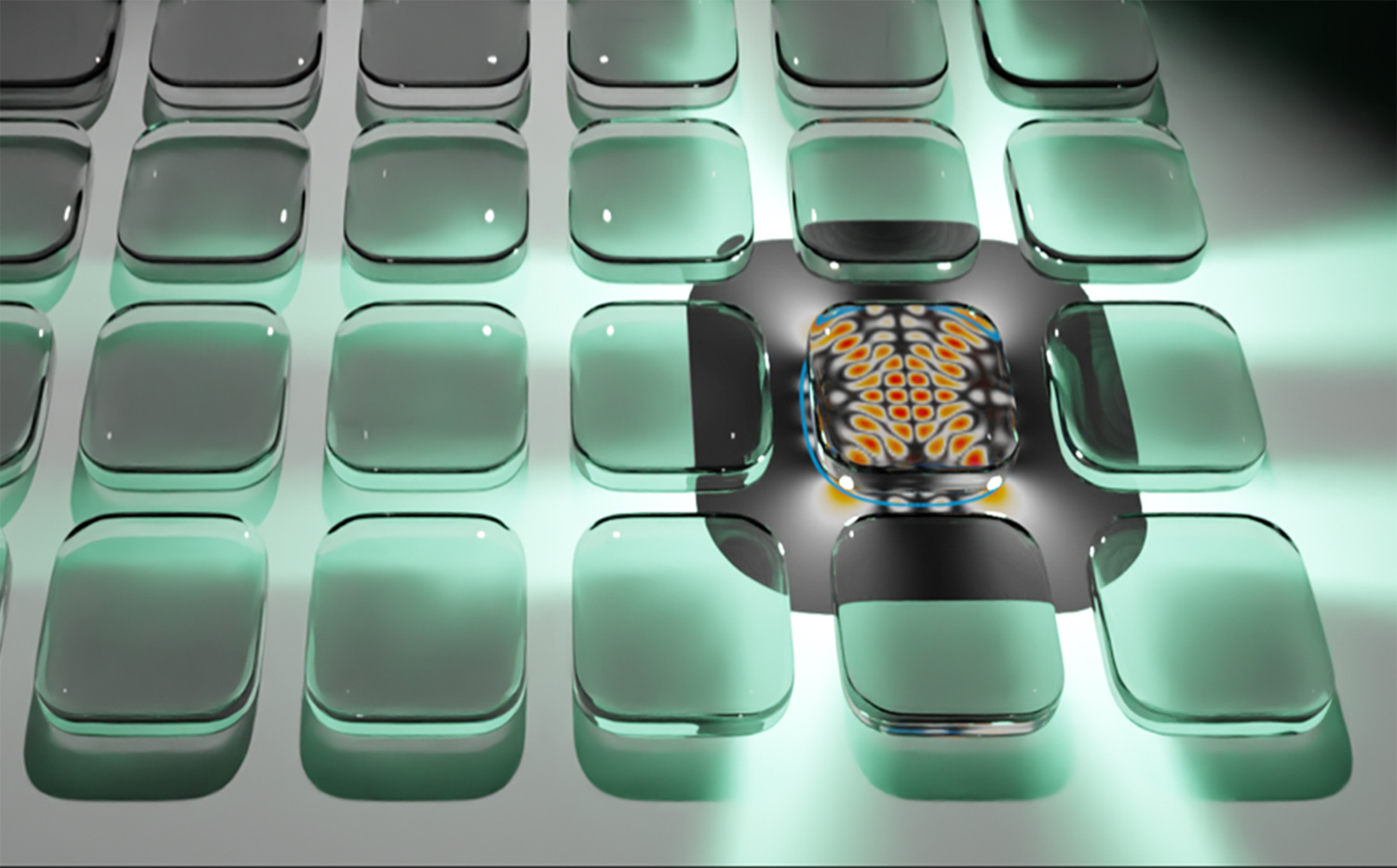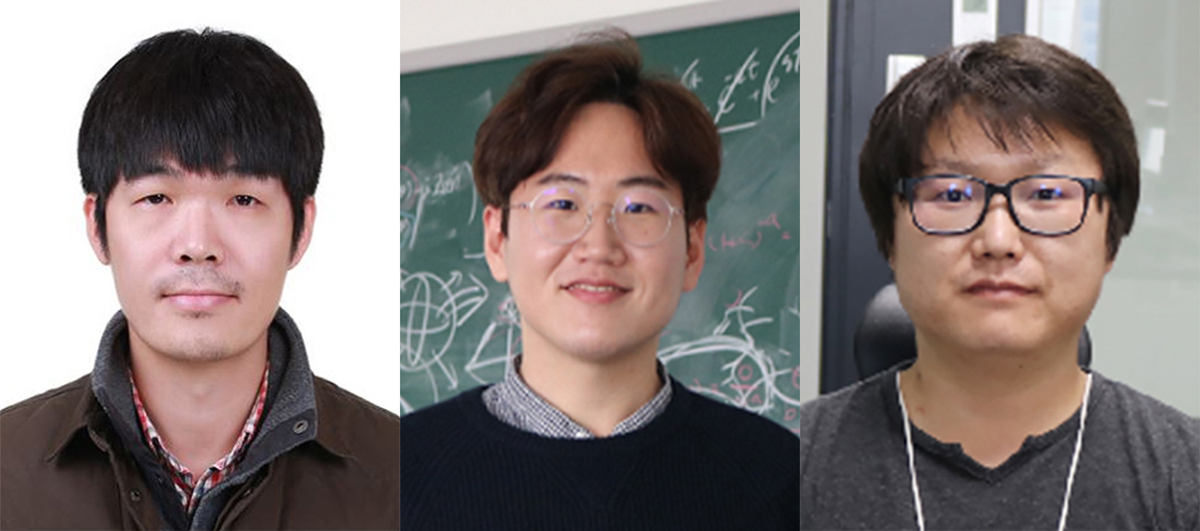커뮤니티
부경투데이
- 국립 부경대학교의 다양한 모습과 소식을 접하시면 부경대학교가 한번 더 가까워집니다.
| 부경대·한양대·IBS 공동 연구성과 '주목'(A notable achievement of joint research by PKNU, Hanyang university, and the IBS) | |||
| 작성자 | 대외협력과 | 작성일 | 2023-05-15 |
| 조회수 | 693 | ||
| 부경대·한양대·IBS 공동 연구성과 '주목'(A notable achievement of joint research by PKNU, Hanyang university, and the IBS) | |||||
 |
대외협력과 |  |
2023-05-15 |  |
693 |
불안정 양자혼돈 속 안정, 역설적 ‘양자스카 상태’ 규명 ‘주목’
- 부경대·한양대·기초과학연구원 공동 연구성과

△ 광결정에서 구현한 양자스카 상태 모식도.
국립부경대학교와 한양대학교, 기초과학연구원(IBS) 공동연구팀이 광결정 양자 카오스(혼돈)계에서 안정적인 상태가 존재하는 역설적인 ‘양자스카 상태’를 처음으로 규명하는 데 성공했다.
부경대 박희철 교수(물리학과)와 한양대 박문집 교수(물리학과), IBS 복잡계이론물리연구단 이창환 박사가 참여한 공동연구팀은 이 연구 결과를 담은 논문 ‘Bloch Theorem Dictated Wave Chaos in Microcavity Crystals’를 광학 분야 국제학술지 <Light: Science & Applications>(IF: 20.26 / JCR 분야 상위 2.4%)에 최근 발표했다.
물리학에서는 위치에너지가 높은 물체는 안정한 위치로 낙하하는 것이 상식인데, 물체가 힘의 평형을 이뤄 움직임이 없는 안정한 고정점과 조금만 벗어나도 힘의 평형이 깨지는 불안정한 고정점 두 가지로 상태를 구분한다.
반면 양자역학에서는 이런 상식이 어긋날 수 있다. 입자-파동 이중성에 의한 간섭현상으로 인해 불안정한 고정점에서도 안정적으로 입자가 위치할 수 있다고 제안된 바 있는 것. 이러한 흥미로운 양자상태를 ‘양자스카 상태’라고 한다.
복잡한 양자혼돈계에서 외부 간섭에도 안정한 양자스카 상태를 구현할 수 있다면 양자 센싱 등 양자기술에 폭넓게 활용할 수 있기 때문에, 마이크로 공진기 내부의 불안정한 고정점에 광자를 가두는 방식으로 양자스카 상태를 구현하려는 시도가 물리학계에서 이어지고 있다.
부경대 등 공동연구팀은 여러 개의 공진기를 격자구조로 배열한 광결정에서 양자스카 상태의 존재를 이론적으로 규명해냈다. 연구팀은 여러 개의 공진기가 상호작용하는 광결정을 이용하면 빛의 움직임을 효과적으로 제어할 수 있다는 점에 착안, 혼돈과 주기성을 조합해 공진기 배열에서 혼돈 상태의 동적 국소화를 제어할 수 있는 새로운 플랫폼을 제시했다.
지금까지 학계에서 양자스카 상태는 단일 공진기에서 제안된 적은 있지만, 여러 개의 공진기가 연결된 광결정 구조에서 제안된 것은 이번이 처음이다.
박희철 교수는 “이번 연구의 핵심인 양자혼돈과 공간적인 규칙성의 융합은 양자혼돈을 효과적으로 제어하는 방법으로 고전의 세계에서 양자를 들여다보고 제어할 수 있는 창이 될 수 있고, 양자기술에 폭넓게 활용되는 새로운 양자 플랫폼이 될 것으로 기대한다.”라고 말했다. <부경투데이>

△ 연구팀 사진(왼쪽부터 박희철, 박문집, 이창환)
Identifying the paradoxical 'quantum scar mode' that keeps stable even in unstable quantum chaos
- joint research result of PKNU, Hanyang university, and the IBS
A joint research team from Pukyong National University, Hanyang university, and the Institute for basic science (IBS) succeeded in identifying the paradoxical 'quantum scar mode', which states that a stable state exists in photonic crystal quantum chaos for the first time.
The joint research team of professor Park Hee-Chul (Physics) from Pukyong National University, professor Park Moon-Jip (physics) from Hanyang university, and doctor Lee Chang-Hwan from the physics of complex systems group in IBS, recently published a thesis titled ‘Bloch theorem dictated wave chaos in microcavity crystals’ in an international journal in the field of optics.
It is common knowledge in physics that an object with high potential energy falls to a more stable position, but it can be distinguished by two states: a stable fixed point where the object balances forces and does not move, and an unstable fixed point where force balance is broken even if it is slightly out of position.
On the other hand, this common sense can be defied in quantum mechanics. It has been suggested that particles can be stably located even at unstable fixed points due to interference caused by the duality of particles and waves. Such an interesting quantum state is called the 'quantum scar mode'.
If a stable quantum scar mode can be implemented in a complex quantum chaotic structure even with external interference, it can be widely used in quantum technology such as quantum sensing. For this reason, attempts to implement a quantum scar state by confining photons to an unstable fixed point inside a micro-resonator are continuing in the physics world.
Pukyong National University and the research team theoretically identified the existence of a quantum scar mode in a photonic crystal in which several resonators are arranged in a lattice structure. Focusing on the fact that the movement of light can be effectively controlled using photonic crystals in which multiple resonators interact, the research team proposed a new platform that can control the dynamic localization of chaotic states in an array of resonators by combining chaos and periodicity.
Although the quantum scar mode has been proposed in a single resonator in the academia, this is the first time that it has been proposed in a photonic crystal structure in which multiple resonators are connected.
Professor Park Hee-Chul said, "The fusion of quantum chaos and spatial regularity, which is the core of this research, is a method to effectively control quantum chaos. Through this, I see that it can be a window to look into and control quantum in the classical world, and I expect that it will be a new quantum platform that is widely used in quantum technology." <Pukyong Today>